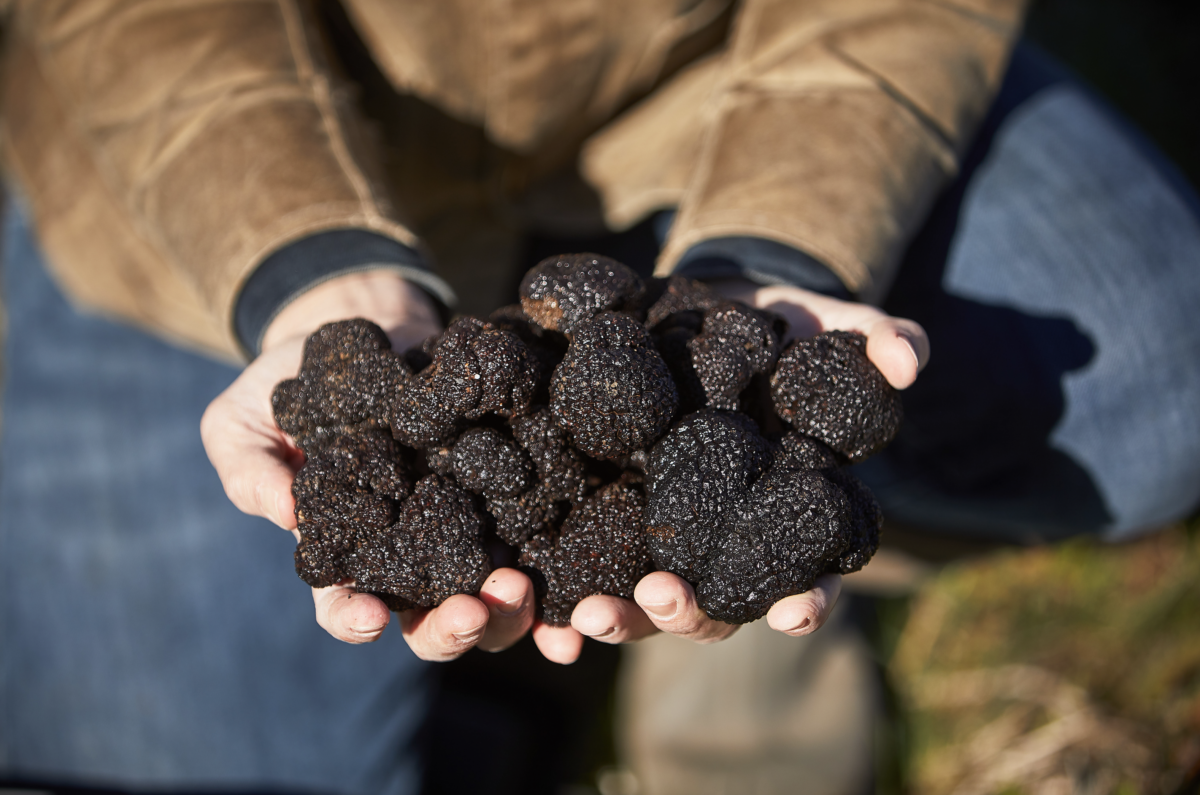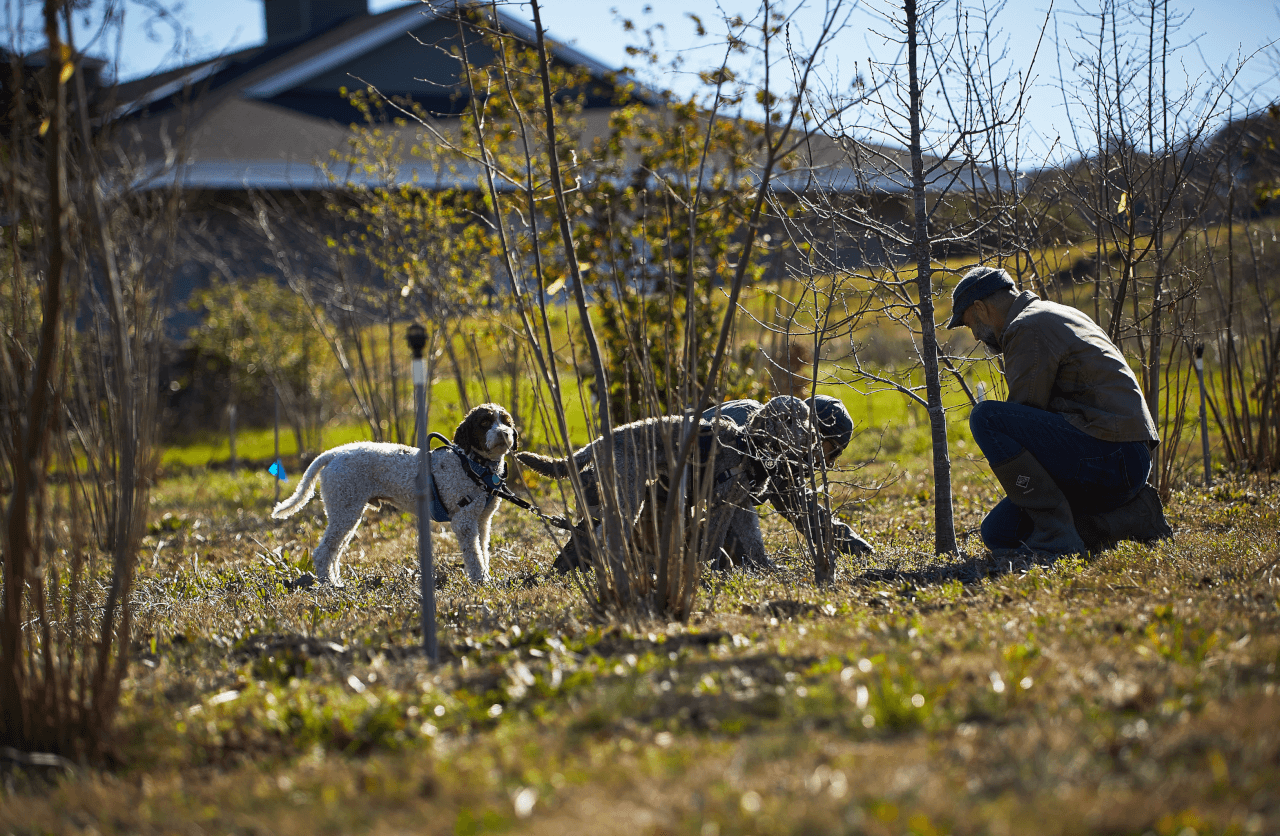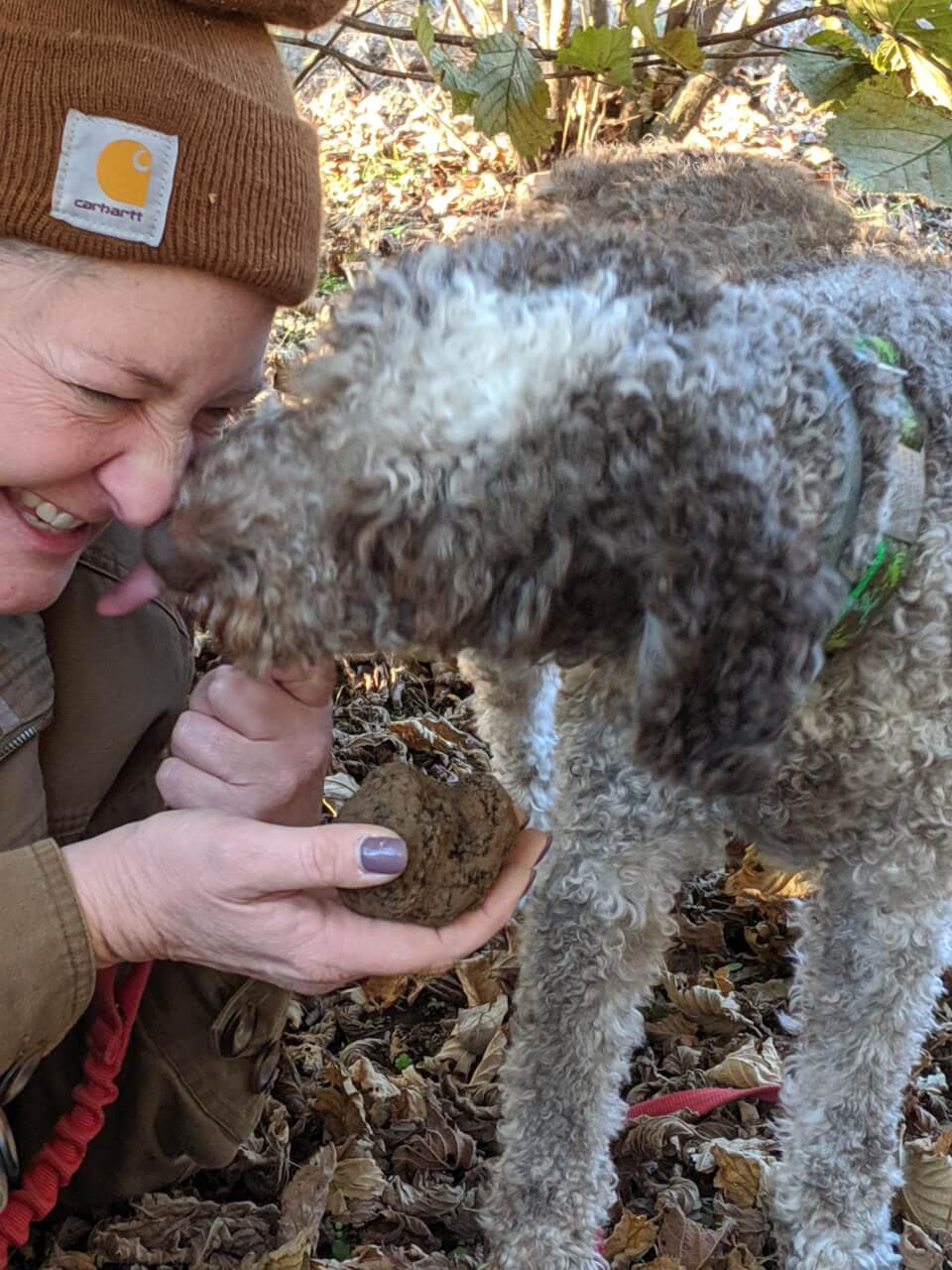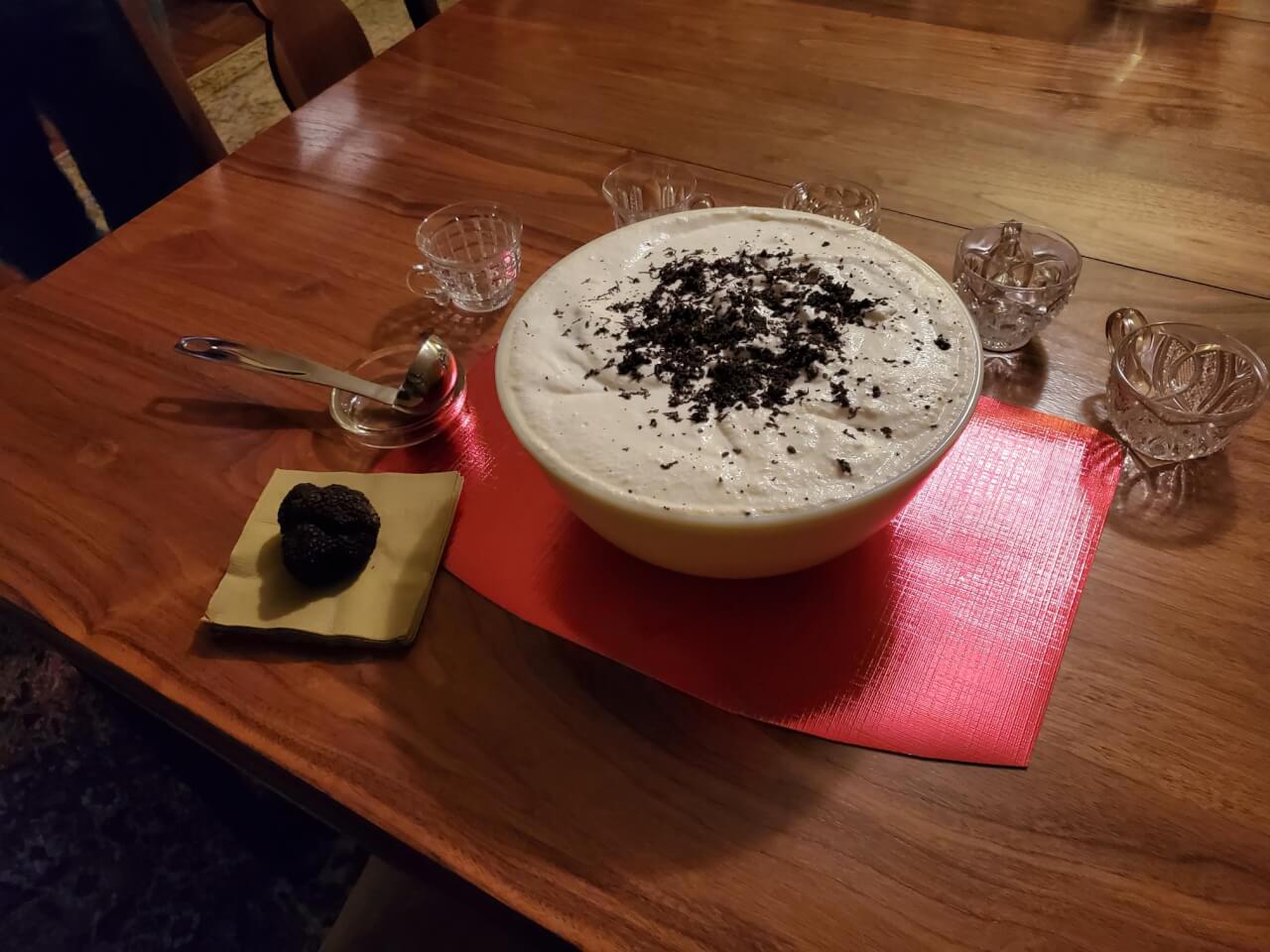As Climate Change Endangers Wild Truffles, US Producers Try Cultivation Instead
One of the most prized symbols of ultra-luxe indulgence is being endangered by climate change.
As Climate Change Endangers Wild Truffles, US Producers Try Cultivation Instead
One of the most prized symbols of ultra-luxe indulgence is being endangered by climate change.

Photography courtesy of Kendall Jackson
Truffles are the culinary equivalent of a diamond. Vertiginously expensive, out of reach for many, desired by most, frequently imitated (generally to shrieks of derision)—symbols of so much more than the sum of their parts. And increasingly, wild truffles are very hard to come by.
At the same time, the US market for cultivated truffles is taking off. Truffle farms were virtually non-existent in the US 15 years ago; today, there are dozens of viable commercial farms and close to 200 active members of the North American Truffle Growers’ Association (NATGA). Farmed truffles do not differ in taste or aroma from their wild counterparts, and in cultivating them, producers can better control location, light, and irrigation.
Problem solved? Not so much. No farmer in North America—and only one farmer in France, with limited success—has thus far been able to commercially farm the most expensive and prized truffle of them all, the Alba.
What are truffles?
Truffles are neither plant nor animal. They are the spore-bearing fruit of a fungus that grows underground, in very particular micro-environments near host trees. Poplar, beech and oak trees are the most common hosts; truffles receive food from the tree’s roots,l and, in exchange, deliver nutrients to the soil in which the tree grows. When harvested (this is done by scent, typically by trained Italian Lagotto Romagnolo dogs, and occasionally with the help of a trained pig, such as the Spanish black pig), they resemble lumpen, soil-flecked potatoes or, occasionally, a particularly off-putting donut hole.
The global truffle market is currently valued at around $378.7 million with a potential to grow up to $906.3 million by 2033. There are hundreds of species, but only a handful of edible ones and only a few widely prized, highly valuable types.
Bianchetto truffles, also known as white truffles, are often mistaken for Albas. They grow wild in pockets across Europe, and they have been successfully farmed in several regions of the world, including the US. They are described as having a similar flavor profile, with more pronounced notes of garlic than fermented cheese. These truffles can sell for up to $1,000 a pound.
Winter Black Truffles, known by many as Périgord truffles, the region of France in which they rose to fame, also grow wild in Spain, France, and Italy. Earthy and nutty, with sweet notes, they have been farmed successfully for centuries, and they are the most common farmed truffle in the US. Périgord truffles can sell for up to $2,000 a pound.
The most elusive truffle, the Alba, has famously evaded the centuries-long effort of cultivation. Described as garlicky, with notes of fermented cheese, it is deeply musky and looks like an off-white overgrown fingerling potato, crossed with ginger root.. A bidder in Hong Kong recently paid more than €180,000 (or $190,881) for 700 grams (24.69 ounces) of Alba, the equivalent of $7,731.10 an ounce. It only grows in Alba, Italy, and one secret corner of France, where a team of scientists managed to harvest a handful following decades of investment and effort. The successful experiment was hailed as a breakthrough by scientists who have struggled to transplant the finicky truffle to climates with the exact same soil, climate, and array of flora and fauna. The experiment has not, as far as we know, been successfully replicated elsewhere.

Wild truffles are hurting in a warming climate
Climate change affects the range in which many plant, animal, and fungi species grow, and truffles are particularly vulnerable.
“The hot, dry summers and general climate extremes we have been seeing across Europe are very bad for truffles,” says Dr. Brian Steidinger, a postdoctoral research fellow at the University of Konstanz and the lead author of a study on the effect of climate change on truffles. “The sub-populations of truffles that are most valued appear to be the most vulnerable to climate extremes. We found in our study that once trees go into drought conditions they cannot provide as much carbon to truffles, which means the harvests plummet.”
Steidinger’s study showed that for every 1-degree C increase in summer temperature over a site’s 30-year mean caused a 22-percent drop in productivity for the Périgord truffle. A single summer temperature spike of 3 degrees C was enough to halt production completely.
Impacts are still being studied, but recent harvests in Alba have also been disappointing, something that experts blame on rising temperatures and drought.
Jean-Francois Magnan, the estate manager at the uber-luxe Auberge resort Domaine des Etangs in Southwest France, says this past year’s truffle harvest was the “lowest” he’d seen in seven years. The wholesale markets were low, and wholesale prices soared by more than 50 percent, he notes, making it challenging to deliver the truffles that visitors and tourists expect during France’s and Italy’s various truffle festivals and imperiling their future.

US producers struggle with cultivated truffles
As the number of wild truffles plummets, harvests of cultivated truffles are on the rise across Europe, Australia, and North America. Not that it has been easygoing, especially for the most ambitious farmers.
“I planted 25 acres of inoculated trees to grow the most expensive commercially viable truffle, the Winter Black Truffle,” says Margaret Townsend, founder of the NewTown Truffiere farm in Holland, Kentucky, and president of the North American Truffle Growers’ Association.
She planted her farm in 2011 and did not get her first harvest until 2020. “And that first year, all I got was 13 truffles. So, calling it productive after eight-and-a-half years would be a stretch.”
The time between planting and harvest varies—the minimum wait is thought to be six years and harvest doesn’t truly ramp up until several years after that. “Ramping up” is in the eye of the beholder, she notes. Townsend refrained from sharing the size of her record crop, but she says she hopes to land at 35 pounds of truffles an acre eventually. A typical truffle weighs a few ounces, but it can grow to more than one pound.
“I see the truffle industry in the US like the wine industry,” she says. “We are the pioneers. We’re laying the groundwork for the future. And I’m having a wonderful time.”
Townsend estimates that there are around 175 commercial growers in the NATGA, some with a handful of trees and others with dozens of acres. The highest production numbers she’s heard of in the U.S. is about 35 pounds per producing acre.
“But what they don’t tell you is that not every acre is productive,” says Townsend.
She believes that “we are at an inflection point in North America. It’s exciting to see us grow. The next generation will take off I think. In Australia, where they’ve been doing this for longer, some farmers are getting up to 60 pounds an acre.”
Tucker Taylor, director of Kendall Jackson’s culinary gardens and head truffle maestro for Jackson Family Wines, agrees that boom times are coming.
“The Jackson Family is thinking several generations down the line,” says Taylor. “They want to diversify and do more than make wine, so, in 2011, they planted 10 acres of inoculated oaks and hazelnuts with the goal of growing black truffles in Sonoma County.”
read more
As Chaga Keeps Trending, Mycologists Worry About Running Out
They lucked out and were able to harvest after six years, but it wasn’t until the past few that things really started to get interesting.
“Our biggest harvest so far has been 65 pounds, but I think this year is looking really good,” Taylor says. “The market is strong, too. I created a garden for Chef Thomas Keller and worked for him for five years, so I have a lot of relationships with chefs who are eager to get our truffles.”
Not every single truffle is Michelin-star dining worthy though; he estimates that one-third are ultra-premium, one-third are excellent and the final third aren’t “ideal” for eating. Truffles are typically graded based on their variety, weight, perfume and age. The United Nations Standard is considered an industry baseline.
The top ones go to top-flight chefs for between $750 and $1,200 a pound. The second best are utilized by Kendall Jackson’s culinary team (typically in truffle butters or shaved over pasta) and the lowest tier is frozen and used to inoculate trees that aren’t currently producing well.
North Carolina’s Burwell Farms, the largest truffle producer in the country, is growing Bianchetto truffles and is the first in the US to do so.
“We’re growing them on loblolly pine trees because the results have been so much better than other truffle farming systems in North America,” says Jeffrey Coker, a plant biologist and president of Burwell Farms.
The first trees were planted in 2014, but the harvest came much faster—just three years. And the production level for Bianchetto truffles is high: about a pound per tree per year.
Because the farmed truffle industry is so young, farmers are often at a loss to explain why certain regions, farms and varieties seem to thrive. In the end, many, like Townsend, return to wine industry analogies.
“It took winegrowers decades to figure out which grapes thrived in certain regions and under what ideal conditions,” she says. “We just started to explore that ourselves.”
That need for raw data and information sharing is the reason the NATGA is so essential to the future.
“If we weren’t all as open with sharing our successes and failures, we wouldn’t have come this far, this fast,” says Townsend.

Will farmed truffles be as vulnerable as cultivated truffles?
Climate change is hitting every region of the world, but some farmers argue that cultivated truffles may fare better than their wild counterparts, as they can control the environment better by manipulating irrigation and light sources.
Others are less convinced.
“Climate change will affect farmed truffles in the same way that it affects wild truffles,” says Dr. Charles LeFevre, a mycologist, truffle-growing pioneer, and co-founder of the Oregon Truffle Festival. “There are limits to the extent that farmers can modify their practices to adapt. One of the principal concerns is a reduction in summer rainfall, which can be overcome if irrigation water is possible.”
But it’s not always possible. In the past few years here in the Western US, says LeFevre, “several productive farms lost their crops because irrigation water was cut off mid-summer due to record drought conditions.”
When the harvest is good though, says LeFevre, “they sell themselves.”
read more
Is Your Favorite New Mushroom Eradicating Native Mushroom Species?
Taylor agrees, saying that many of the locally minded chefs he works with wouldn’t even consider putting a European truffle on their menu.
“I work with Michelin-starred chefs who only feature local food, and they want the freshest ingredients possible,” he says. “Several have put truffles on their menu for the first time because they know ours are from Sonoma and are delivered the day of harvest. Even with overnight shipping, French and Italian truffles still take almost a week to get here, losing aroma and flavor every step of the way.”
The growing domestic truffle market is also creating opportunities for European-style festivals that draw curious eaters and explorers and grow the entire business. When the Oregon Truffle Festival was launched in 2006, LeFevre says there were no working truffle dogs in the Western US. “Now, there are about 10 businesses in the Pacific Northwest alone that include truffle dog training among their specializations,” he says. “We have a population of trained truffle dogs in the thousands. The improved quality of truffles produced by harvest with trained dogs is driving prices up to the point where they are beginning to rival those of the famous French black truffles.”
Follow us

This work is licensed under a Creative Commons Attribution-NoDerivatives 4.0 International License.
Want to republish a Modern Farmer story?
We are happy for Modern Farmer stories to be shared, and encourage you to republish our articles for your audience. When doing so, we ask that you follow these guidelines:
Please credit us and our writers
For the author byline, please use “Author Name, Modern Farmer.” At the top of our stories, if on the web, please include this text and link: “This story was originally published by Modern Farmer.”
Please make sure to include a link back to either our home page or the article URL.
At the bottom of the story, please include the following text:
“Modern Farmer is a nonprofit initiative dedicated to raising awareness and catalyzing action at the intersection of food, agriculture, and society. Read more at <link>Modern Farmer</link>.”
Use our widget
We’d like to be able to track our stories, so we ask that if you republish our content, you do so using our widget (located on the left hand side of the article). The HTML code has a built-in tracker that tells us the data and domain where the story was published, as well as view counts.
Check the image requirements
It’s your responsibility to confirm you're licensed to republish images in our articles. Some images, such as those from commercial providers, don't allow their images to be republished without permission or payment. Copyright terms are generally listed in the image caption and attribution. You are welcome to omit our images or substitute with your own. Charts and interactive graphics follow the same rules.
Don’t change too much. Or, ask us first.
Articles must be republished in their entirety. It’s okay to change references to time (“today” to “yesterday”) or location (“Iowa City, IA” to “here”). But please keep everything else the same.
If you feel strongly that a more material edit needs to be made, get in touch with us at [email protected]. We’re happy to discuss it with the original author, but we must have prior approval for changes before publication.
Special cases
Extracts. You may run the first few lines or paragraphs of the article and then say: “Read the full article at Modern Farmer” with a link back to the original article.
Quotes. You may quote authors provided you include a link back to the article URL.
Translations. These require writer approval. To inquire about translation of a Modern Farmer article, contact us at [email protected]
Signed consent / copyright release forms. These are not required, provided you are following these guidelines.
Print. Articles can be republished in print under these same rules, with the exception that you do not need to include the links.
Tag us
When sharing the story on social media, please tag us using the following: - Twitter (@ModFarm) - Facebook (@ModernFarmerMedia) - Instagram (@modfarm)
Use our content respectfully
Modern Farmer is a nonprofit and as such we share our content for free and in good faith in order to reach new audiences. Respectfully,
No selling ads against our stories. It’s okay to put our stories on pages with ads.
Don’t republish our material wholesale, or automatically; you need to select stories to be republished individually.
You have no rights to sell, license, syndicate, or otherwise represent yourself as the authorized owner of our material to any third parties. This means that you cannot actively publish or submit our work for syndication to third party platforms or apps like Apple News or Google News. We understand that publishers cannot fully control when certain third parties automatically summarize or crawl content from publishers’ own sites.
Keep in touch
We want to hear from you if you love Modern Farmer content, have a collaboration idea, or anything else to share. As a nonprofit outlet, we work in service of our community and are always open to comments, feedback, and ideas. Contact us at [email protected].by Kathleen Willcox, Modern Farmer
November 9, 2023
Modern Farmer Weekly
Solutions Hub
Innovations, ideas and inspiration. Actionable solutions for a resilient food system.
ExploreExplore other topics
Share With Us
We want to hear from Modern Farmer readers who have thoughtful commentary, actionable solutions, or helpful ideas to share.
SubmitNecessary cookies are absolutely essential for the website to function properly. This category only includes cookies that ensures basic functionalities and security features of the website. These cookies do not store any personal information.
Any cookies that may not be particularly necessary for the website to function and are used specifically to collect user personal data via analytics, ads, other embedded contents are termed as non-necessary cookies.
Farming Truffles where we are in Wakkerstroom, Mpumalanga Province in South Africa saw minimal amount of truffles this year 2023 even although everything was right. Our expectations were also based on the bumper crop the previous year 2022 as weather etc were basically the same for 2023 year. Truffles will be truffles and it is not a product you can bank on every year to be the same as the previous year. Methods of cultivation are kept close the chest which inhibits knowledge spread around the world.
Good Luck America